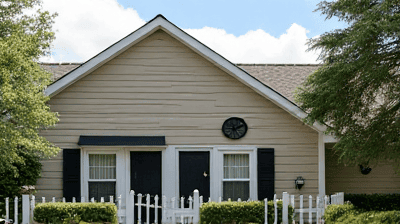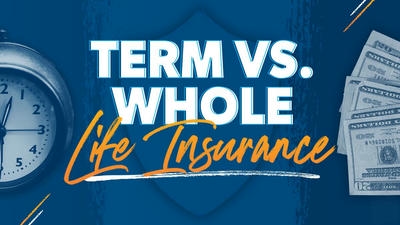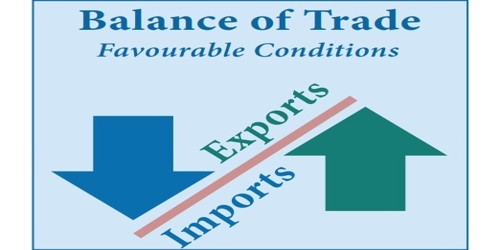
Buying your first home is a major milestone, but in 2025, the housing market presents unique challenges and opportunities for first-time homebuyers. Rising interest rates, fluctuating home prices, and shifting buyer preferences make navigating this landscape complex. However, with careful planning, financial discipline, and strategic decision-making, first-time buyers can secure their dream home without overextending themselves.
Understanding the 2025 Housing Market
The 2025 housing market is shaped by several key factors. First, interest rates, which have risen steadily since 2022, are hovering around 6 to 7 percent for 30-year fixed mortgages, increasing borrowing costs. Second, home price growth has slowed in some markets due to affordability constraints, but desirable areas like Austin, Charlotte, and Phoenix continue to see steady appreciation. Third, inventory remains tight in many regions, as homeowners with low-rate mortgages from the early 2020s are reluctant to sell, creating competition for available homes.
Despite these challenges, opportunities exist. First-time homebuyers can benefit from government-backed loan programs, softening demand in some markets, and the growing popularity of affordable suburbs and mid-sized cities. By understanding these dynamics and preparing thoroughly, buyers can position themselves for success.
Tip 1: Assess Your Financial Readiness

Before diving into the housing market, evaluate your financial situation to ensure you’re ready to buy. Homeownership comes with significant upfront and ongoing costs, so preparation is key.
Create a Realistic Budget
Start by calculating how much home you can afford. A common rule is that your monthly housing costs (mortgage, taxes, insurance) should not exceed 28 percent of your gross monthly income. For example, if you earn 6000 dollars per month, aim for housing costs below 1680 dollars.
Factor in additional expenses:
Down payment: Most loans require 3 to 20 percent of the purchase price. In 2025, with median home prices around 400000 dollars in many markets, this means saving 12000 to 80000 dollars.
Closing costs: Typically 2 to 5 percent of the purchase price, or 8000 to 20000 dollars for a 400000-dollar home.
Ongoing costs: Include property taxes, homeowners insurance, maintenance, and utilities.
Use online mortgage calculators from sites like Bankrate or Zillow to estimate payments based on your income, down payment, and interest rates.
Improve Your Credit Score
Your credit score directly impacts your mortgage rate and loan eligibility. In 2025, lenders are stricter due to economic uncertainty, so aim for a score of 700 or higher to secure favorable terms. To boost your score:
Pay down credit card balances to keep your credit utilization below 30 percent.
Avoid opening new credit accounts or missing payments in the months leading up to your application.
Check your credit report for errors using free services like AnnualCreditReport.com and dispute inaccuracies.
Save for a Down Payment
Saving for a down payment is one of the biggest hurdles for first-time buyers. In 2025, programs like FHA loans allow down payments as low as 3.5 percent, but a larger down payment (10 to 20 percent) reduces your monthly payments and may eliminate private mortgage insurance (PMI). Strategies to save:
Automate monthly transfers to a high-yield savings account.
Cut discretionary spending, such as dining out or subscriptions.
Explore down payment assistance programs, which are available in many states for first-time buyers.
Tip 2: Get Pre-Approved for a Mortgage
A mortgage pre-approval is a lender’s commitment to loan you a specific amount based on your financial profile. In 2025’s competitive market, pre-approval is essential to stand out to sellers and move quickly when you find the right home.
Why Pre-Approval Matters
Pre-approval shows sellers you’re a serious buyer, increasing the likelihood of your offer being accepted. It also helps you set a realistic budget and avoid wasting time on homes outside your price range. In 2025, with low inventory in many markets, pre-approved buyers have an edge over those who haven’t secured financing.
How to Get Pre-Approved
Contact multiple lenders—banks, credit unions, or online mortgage companies—to compare rates and terms. You’ll need to provide:
Income verification (pay stubs, tax returns).
Asset statements (bank accounts, investments).
Credit history and debt information.
Shop around for the best rates, as even a 0.25 percent difference can save thousands over the life of a 30-year loan. In 2025, consider locking in your rate if you expect interest rates to rise further during your home search.
Tip 3: Research the Right Market

Choosing the right location is critical for first-time homebuyers. In 2025, affordability and lifestyle preferences are driving buyers to mid-sized cities and suburbs rather than expensive coastal metros.
Look for Affordable Markets
High-cost cities like San Francisco or New York may be out of reach, but markets like Raleigh, North Carolina, or Boise, Idaho, offer affordability and growth potential. Research median home prices, price-to-income ratios, and inventory levels using tools like Redfin or Realtor.com. For example, a price-to-income ratio below 4 indicates a market is relatively affordable.
Consider Lifestyle Factors
Your home should align with your lifestyle. Evaluate:
Commute times: Proximity to work or public transit is key, especially with hybrid work models in 2025.
Schools: Strong school districts boost property values and appeal to families.
Amenities: Access to parks, restaurants, and cultural attractions enhances quality of life.
Explore Up-and-Coming Areas
Neighborhoods on the cusp of growth often offer better value. Look for signs of revitalization, such as new businesses, infrastructure projects, or renovated homes. For example, areas near new transit lines or corporate campuses (e.g., Amazon’s HQ2 in Arlington, Virginia) are likely to appreciate.
Tip 4: Understand Your Financing Options
First-time homebuyers have access to several loan programs designed to make homeownership more accessible. In 2025, these options are particularly valuable given high interest rates and home prices.
FHA Loans
FHA loans, backed by the Federal Housing Administration, require just 3.5 percent down and allow credit scores as low as 580. They’re ideal for buyers with limited savings or lower credit. However, FHA loans come with mortgage insurance premiums, which increase monthly costs.
VA Loans
For eligible veterans and active-duty military, VA loans offer zero down payment and no PMI, making them a powerful option. In 2025, VA loan limits have increased in high-cost areas, providing more flexibility.
USDA Loans
USDA loans target rural and suburban areas, offering zero down payment for low- to moderate-income buyers. Check USDA eligibility maps to see if your target area qualifies.
Conventional Loans
Conventional loans with 5 to 20 percent down are suitable for buyers with strong credit and savings. In 2025, “conforming” loan limits have risen to around 800000 dollars in most areas, allowing larger loans without jumbo mortgage rates.
Down Payment Assistance
Many states and local governments offer grants or forgivable loans for first-time buyers. In 2025, programs like California’s Dream for All or Florida’s Hometown Heroes provide thousands in assistance. Research programs in your state through HUD’s website or local housing authorities.
Tip 5: Work with a Knowledgeable Real Estate Agent

A skilled real estate agent is invaluable for first-time buyers. In 2025, with low inventory and competitive bidding, an agent can help you navigate the market and negotiate effectively.
Finding the Right Agent
Look for an agent with experience in your target area and a track record with first-time buyers. Ask for referrals from friends or check reviews on platforms like Zillow. Interview multiple agents to ensure they understand your goals and budget.
How an Agent Helps
Market insights: Agents know which neighborhoods are appreciating and where deals can be found.
Negotiation: They can craft competitive offers and navigate bidding wars.
Paperwork: Agents handle contracts, disclosures, and deadlines, reducing stress.
In 2025, some agents offer buyer rebates or reduced commissions due to market shifts, so inquire about cost-saving options.
Tip 6: Be Strategic with Your Offer
In a competitive market, crafting a strong offer is crucial. In 2025, while some markets have cooled, desirable areas still see multiple offers on well-priced homes.
Make a Competitive Offer
Research comparable sales (comps) to ensure your offer aligns with market value. In 2025, offering slightly above asking price may be necessary in hot markets, but avoid overbidding beyond your budget. Include a pre-approval letter to strengthen your offer.
Consider Contingencies Carefully
Contingencies (e.g., inspection, appraisal, financing) protect you but may weaken your offer in a bidding war. In 2025, waiving minor contingencies, like a home sale contingency, can make your offer more appealing, but consult your agent to avoid excessive risk.
Write a Personal Letter
A heartfelt letter to the seller explaining why you love the home can set you apart, especially in markets where sellers receive multiple similar offers. Highlight your commitment to closing and any personal connection to the property.
Tip 7: Plan for Ongoing Costs
Homeownership involves more than just a mortgage payment. In 2025, rising property taxes and insurance costs are significant considerations.
Budget for Maintenance
Set aside 1 to 2 percent of the home’s value annually for maintenance and repairs. For a 400000-dollar home, this means 4000 to 8000 dollars per year. Unexpected costs, like a new roof or HVAC system, can be substantial, so build an emergency fund.
Account for Taxes and Insurance
Property taxes vary widely by location. In 2025, states like Texas and Florida have high property taxes (1.5 to 2 percent of home value), while others, like Hawaii, are lower (0.3 percent). Homeowners insurance averages 1500 to 3000 dollars annually, with higher costs in areas prone to natural disasters.
Factor in HOA Fees
If buying in a community with a homeowners association (HOA), budget for monthly fees, which can range from 100 to 500 dollars or more. Review HOA rules to ensure they align with your lifestyle.
Tip 8: Stay Flexible and Patient
The 2025 housing market rewards patience. With high interest rates and low inventory, finding the perfect home may take longer than expected. Be prepared to:
Expand your search to nearby neighborhoods or suburbs.
Consider fixer-uppers, which are often more affordable but require renovation.
Wait for market shifts, as softening demand in some areas may lead to price reductions.
Avoid rushing into a purchase out of frustration, as overpaying or buying a home that doesn’t meet your needs can lead to regret.
Case Study: A First-Time Buyer in 2025
Consider Sarah, a 30-year-old first-time buyer in Charlotte, North Carolina. Earning 70000 dollars annually, she wants a home under 350000 dollars. Sarah saves 17500 dollars for a 5 percent down payment on a conventional loan and gets pre-approved for a 330000-dollar mortgage at 6.5 percent interest. Her monthly payment, including taxes and insurance, is 2200 dollars, within her 28 percent housing cost guideline.
Sarah works with an agent to target up-and-coming neighborhoods like NoDa, where homes are appreciating but still affordable. After losing a bidding war, she finds a three-bedroom home listed at 325000 dollars. Her agent negotiates a purchase price of 320000 dollars with an inspection contingency. Sarah uses a 5000-dollar down payment assistance grant from a local program, reducing her upfront costs. After closing, she budgets 3000 dollars annually for maintenance and builds an emergency fund.
This example shows how preparation, research, and flexibility can help first-time buyers succeed in 2025.
Conclusion
Navigating the 2025 housing market as a first-time homebuyer requires careful planning and strategic decision-making. By assessing your financial readiness, securing pre-approval, researching affordable markets, and working with a skilled agent, you can overcome challenges like high interest rates and low inventory. Explore financing options, craft competitive offers, and budget for ongoing costs to ensure long-term success. While the market may seem daunting, the right approach can turn your homeownership dreams into reality. Stay patient, informed, and proactive to find a home that fits your budget and lifestyle in 2025.
Related
-
Financial News

-
Cryptocurrency

-

-
Forex Market

-
Economic Indicators

-
Forex Market

